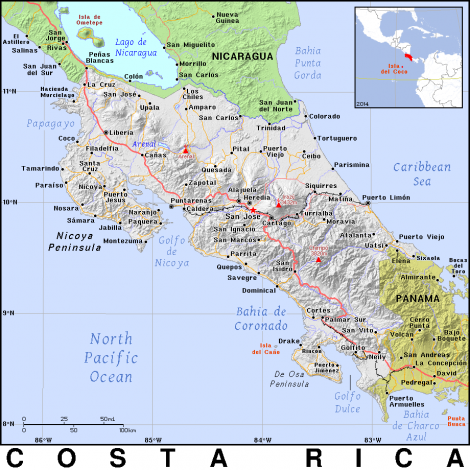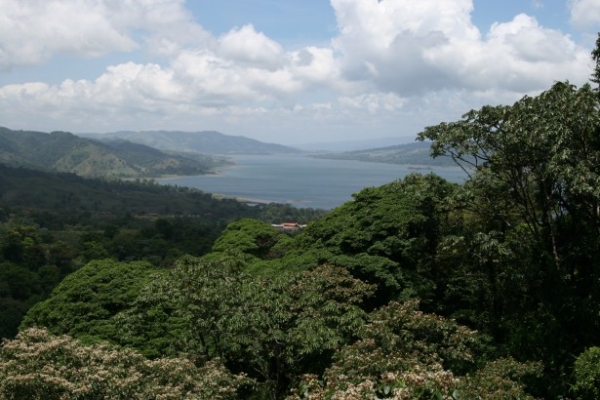Don't miss out on the best jobs!
Subscribe to HelpGoAbroad and weekly we will sent you an email with latest job posts. Provide your email address below
The majority of students looking to study abroad turn their sights to the well-known countries of Europe for their experience. Great Britain, Italy, France, and Spain each hold a spot in the top five countries with the most foreign students. It’s easy to imagine why so many people flock to these countries, but there are opportunities all over the world with fantastic schools and programs waiting to be taken advantage of.
Costa Rica, with its sprawling rain-forests, picturesque beaches, and stable political environment, draws millions of visitors every year, but if you’re looking to extend your stay in the Central American paradise, enrolling in school can be a great way to do so. There are two renowned Universities offering courses in a variety of subjects, and many other institutions that host smaller programs specializing in environmental sustainability and development.
General Facts
Costa Rica is situated in the heart of Central America, nestled between Panama to the south and Nicaragua to the north. The population of this relatively small country just exceeds 4.5 million, the majority of which is located in the capital of San Jose. Tourism has been on the rise since the 1970’s, but over one-third of the entire country is under environmental protection which has left a lot of room for the rainforest to grow uninterrupted. Costa Rica is arguably the most economically stable and environmentally progressive country in Central America, and its lack of an army makes it one of the most peaceful as well.
The Road to Stability
Like its neighbors, Costa Rica was thrown into the mess of Spanish colonialism in the Age of Discovery, but its path out of foreign rule is unique and in many ways has shaped its growth into the progressive country it is today. Unlike most other countries in Central America, Costa Rica was not overrun by landholding elites and an oppressive slave economy in the 1600’s. Instead, small agricultural villages thrived. In the 1800’s, the countries impressively fertile soil was uncovered and huge swaths of jungle were stripped away for coffee plantations. The new-found export brought in a huge amount of wealth, which helped fuel the future economic stability of the country.
In the 1940’s, a coffee baron by the name of Rafael Calderon was elected president. His progressive policy-making was uncharacteristic for the time, and he revolutionized life for the local people. He taxed the wealthy, gave full rights (including the vote) to women and minorities, and abolished the countries army. These laws paved the way to the country of today.
By the 1970’s, coffee prices dropped drastically because of oversupply, and Costa Rica’s economy looked like it would crash. But this drop in prices may have been one of the biggest blessings for the small country. Instead of relying on a commodity to export, Costa Rica switched to import for its economic well-being: the import of tourists. Suddenly, the destruction of the jungle to make way for coffee plantations was halted in the name of preserving biodiversity to draw people to the country. Eco-tourism was on the rise, and the amount of foreigners visiting Costa Rica skyrocketed in the following decade.
Costa Rica Today
Every country has its problems and Costa Rica is no exception, but a few major decisions made in the past 200 years have shaped the country to be the most successful in Central America. The strict democratic policies put in place by President Calderon in the 40’s balanced well with the steep rise in tourism in the last few decades to bolster the middle class, and the quality of life for local people is higher than in any other Central American country. The preservation of rainforests for tourism has also instigated a rise in environmental awareness and sustainability. Today, Costa Rica boasts the highest rankings in social, political, and environmental stability and growth.
Study Abroad In Costa Rica
Costa Rica is proud to have the highest level of biodiversity of any country in the world. With over 615 species and a wide range of habitats, any student of biology would be in heaven. But there are many other options for students in different fields. Whether you want to immerse yourself in the cultural center of Costa Rica or have easy access to the dense jungles of the country, there’s a school for you.
San Jose
San Jose is the capital of Costa Rica and by far the largest city, so life here comes with all of the perks and inconveniences of living in a bustling metro area. Universidad Veritas, a private university with a well-known International Programs department, offers programs in design, art, architecture, photography, and Spanish language. There are more opportunities here to work with NGO’s and other organizations than in Heredia, a nearby city, and there is a thriving nightlife as well.
Heredia
Heredia, located just 7 miles from the capitol, is the college town of Costa Rica. Students make up a huge percentage of the 50,000 person population, and it’s known for its parks and greenery. The city is located in the hills of an inactive volcano, and excursions into the jungle are easier here than from the big city. Universidad Latina is located here, and business, Spanish language, and Latin American studies are a few of the programs offered for foreign students. If you’re looking for a unique college experience with access to both the cultural hub of San Jose and the surrounding rain forests, Heredia might be right up your alley.
Finding a Program
With a little research, you can find a myriad of opportunities for studying abroad in Costa Rica. Institutions specialize in sustainability, development, conservation, and eco-tourism and are usually based out of one of the two cities mentioned above. CEA, AIFS, IES, and USAC are great places to begin your search.
If Europe doesn’t seem like your cup of tea or you want to check out somewhere a little more exotic, consider Costa Rica. This inspiring little country’s rich culture, outstanding devotion to sustainability, and environmental diversity are only a few of its many perks.
Sign in to publish a comment


Be the first to comment on this post.